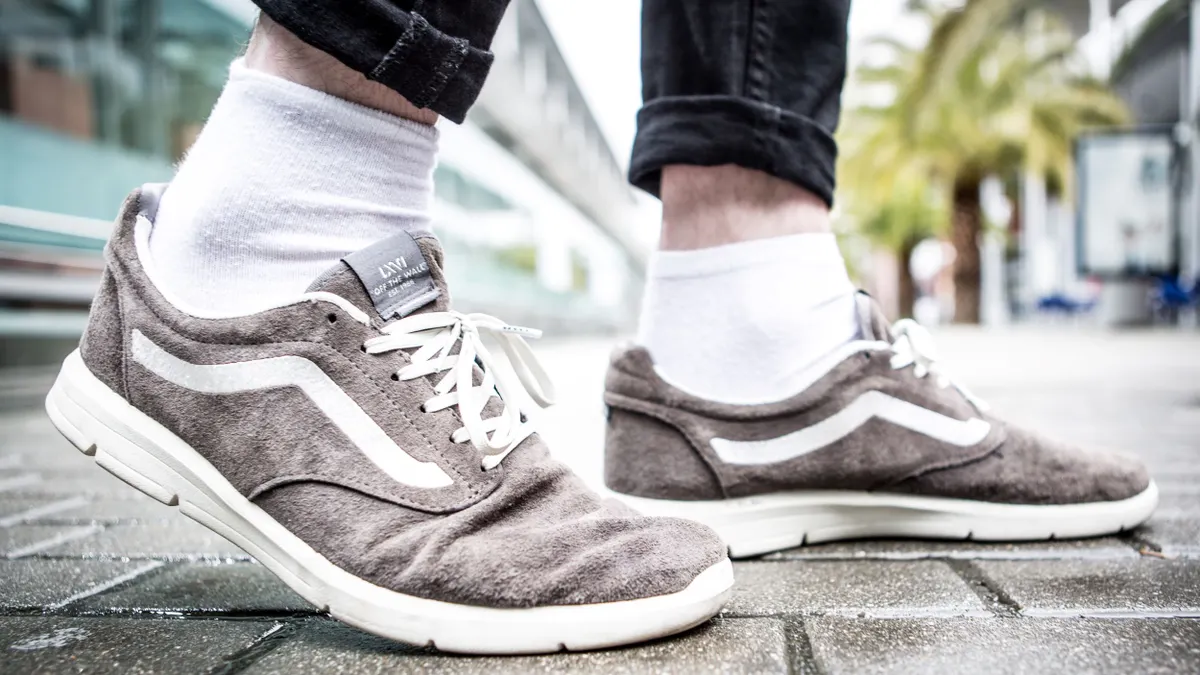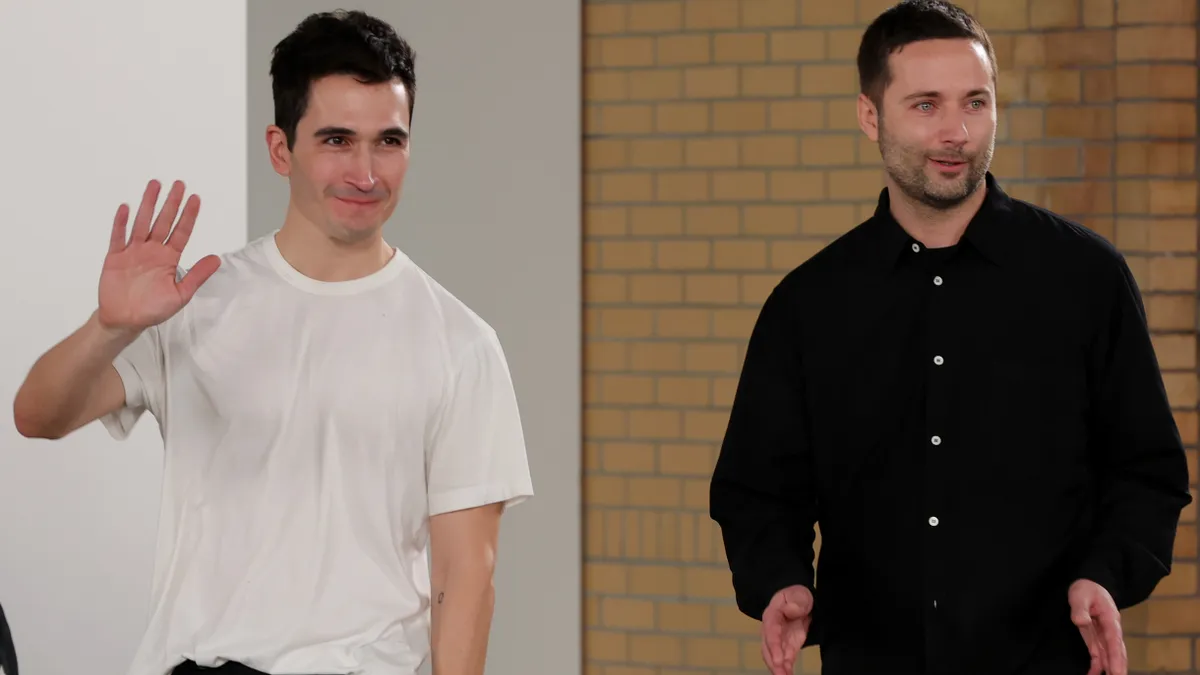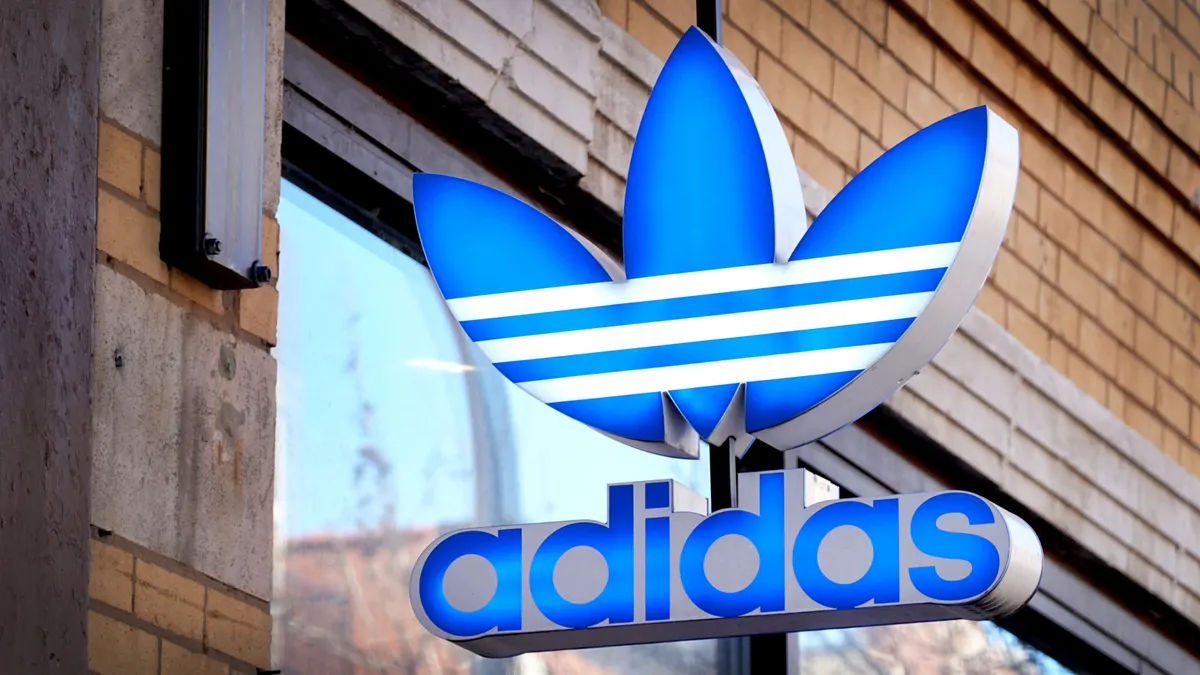Dive Brief:
- VF’s revenue fell 5% year over year in the fourth quarter of its 2025 fiscal year to $2.1 billion, according to an earnings presentation Wednesday.
- The decline was driven by Vans, which recorded a 22% drop in revenue. VF CEO Bracken Darrell said that excluding the skatewear brand, the company’s total revenue would have been up year over year. The North Face and Timberland saw revenue grow by 2% and 10%, respectively, while Dickies fell 14%.
- The Vans decline was due to challenging traffic in the global DTC channel, and it comes amid a “deliberate rationalization” of channel distribution to strengthen the brand’s foundation, per the company. VF added that sales from new Vans products grew, which more than offset declines of some of its “icons” products.
Dive Insight:
Despite the decline, VF’s overall revenue was in line with the guidance it set last quarter of a decrease between 4% and 6%. In Q3, VF posted revenue growth for the first time in more than two years.
Darrell said during the presentation that its plan to turn around VF’s business is “well underway.” The Vans owner announced this strategy in October 2023, which called for a revitalization of the Vans brand as well as an improvement in the company’s North America sales strategy.
The plan has included naming new executives and launching new campaigns for Vans, but also resulted in the company laying off hundreds of people.
VF quarterly revenue since Q1 2023
By region, revenue in the Americas fell 6% in Q4 and fell 4% in the combined region of Europe, the Middle East and Africa. Revenue in the Asia Pacific region was flat. VF’s overall DTC revenue fell 5%, while wholesale fell 4%.
Evercore analysts led by Michael Binetti said in a research note that the results indicate Vans’ DTC revenue could be down more than 10%, “worse than we expected after multiple years of reset.”
Binetti added that “just as the pressure from DTC store closures should be easing, Vans may need to look at another round of [store] closures.”
In VF’s presentation, the company said it was “well-positioned” to offset tariff threats and global trade conditions. Its top four sourcing countries are Vietnam, Bangladesh, Cambodia and Indonesia, and it sources less than 2% from China.
VF noted it accelerated its production and shipments into the U.S. during the 90-day tariff pause period, and added that it is “exploring strategic price actions.”
“We are well-positioned to navigate increased volatility in the macro environment, and I’m confident that the actions we are taking will enable our brands to return to growth and VF to deliver strong, sustainable value creation,” Darrell said in the release.
For the first quarter of VF’s 2026 fiscal year, the company expects revenue to fall between 3% and 5%. VF called Q1 the “smallest quarter of the fiscal year.”











